Common eye problems and diseases in aging adults
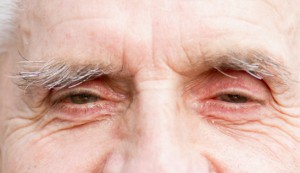 There are all kinds of changes that occur as the years pass, some we need to monitor more than others. Besides greying hair and wrinkling skin, there are many health worries tied to aging; one of the most important areas for concern is your eyesight.
There are all kinds of changes that occur as the years pass, some we need to monitor more than others. Besides greying hair and wrinkling skin, there are many health worries tied to aging; one of the most important areas for concern is your eyesight.
Eye problems and diseases in aging adults generally occur after the age of 50. If caught early, vision problems in older adults do not have to affect your life and you can continue to see all the world has to offer! As long as you know the warning signs of age related eye problems, you can prevent damage from stealing your vision. If you’re over the age of 50 and are concerned about maintaining your eye health, here are eight of the most common eyes problems and diseases. The more you know and understand about them, the more preventative measures you can take to keep your vision strong and clear.
Age related eye problems
-
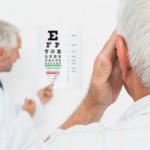 Presbyopia: If small print and close-up text is starting to become blurry, you may have presbyopia. A common eye problem after 50, presbyopia is the inability to focus close-up. With aging, the elasticity of the eye’s lens becomes weaker. When this occurs it becomes more difficult for the lens to focus on close-up objects. Presbyopia has been deemed a normal part of aging and no one is excluded from developing it. So, if you’re now holding your morning paper further away, get yourself checked.
Presbyopia: If small print and close-up text is starting to become blurry, you may have presbyopia. A common eye problem after 50, presbyopia is the inability to focus close-up. With aging, the elasticity of the eye’s lens becomes weaker. When this occurs it becomes more difficult for the lens to focus on close-up objects. Presbyopia has been deemed a normal part of aging and no one is excluded from developing it. So, if you’re now holding your morning paper further away, get yourself checked.
Presbyopia can often be treated with corrective lenses, so don’t worry – you won’t require intense surgery or medications. Without corrective lenses, though, those with presbyopia may experience headaches, eye strain and a decrease in focus.
An ophthalmologist can diagnose presbyopia through a regular eye exam, unfortunately, there are no known prevention methods in the case of presbyopia. Corrective lenses are an effective means to maintain proper focus, so you don’t have to sacrifice doing the things you love.
-
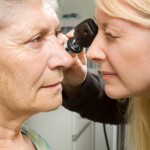 Glaucoma: Glaucoma, over time and untreated, may lead to vision loss and blindness – early detection is necessary to keep your eyes healthy. Glaucoma causes damage to the optic nerve when the fluid which passes through the eye moves too slowly and eventually builds up. This, in turn, leads to an increase in pressure, which leads to optic nerve damage. A person can have an influx in eye pressure but not necessarily have glaucoma; it is only when the optic nerve becomes damaged that glaucoma occurs.
Glaucoma: Glaucoma, over time and untreated, may lead to vision loss and blindness – early detection is necessary to keep your eyes healthy. Glaucoma causes damage to the optic nerve when the fluid which passes through the eye moves too slowly and eventually builds up. This, in turn, leads to an increase in pressure, which leads to optic nerve damage. A person can have an influx in eye pressure but not necessarily have glaucoma; it is only when the optic nerve becomes damaged that glaucoma occurs.
Although glaucoma caused by an increase in eye pressure is the most common form, there are also low-tension and normal-tension glaucoma which can occur without the eye pressure. However, these two are less common.
As an age related eye problem, glaucoma usually affects those over 50, so your age definitely puts you at risk. Furthermore, if you have a family history of glaucoma you should be more inclined to get your eyes checked regularly.
Treatment of glaucoma can range from medications to surgery, all depending on when it is diagnosed.
Related reading: Natural remedies for glaucoma
-
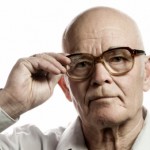 Cataracts: Another common eye problem after 50 is cataracts, which is the clouding of the eye. This can very much impair vision and although it can occur in both eyes, it does not spread from one eye to the other.
Cataracts: Another common eye problem after 50 is cataracts, which is the clouding of the eye. This can very much impair vision and although it can occur in both eyes, it does not spread from one eye to the other.
In a healthy eye, light passes through the lens to the retina. When it reaches the retina, it is changed into nerve signals, which are sent to the brain. In an eye with cataracts, the light cannot reach the retina because it is not clear. So when the nerve signal is sent to the brain, it appears blurry or cloudy.
There are different forms of cataracts, such as:
- Secondary cataract: The cataracts form because of an underlying medical condition or after cataract surgery.
- Traumatic cataract: Cataracts may form due to injury to the eye.
- Congenital cataract: Babies who are born with cataracts.
- Radiation cataract: Occurring after exposure to radiation.
Cataracts can occur in just about anyone, but after 50 they begin to impair vision. Other risk factors include having a pre-existing medical condition like diabetes, smoking and alcohol use or overexposure to sunlight.
If you’re looking to avoid cataracts, always wear protective eye gear when heading outdoors. Also, limiting your alcohol and quitting smoking can make a difference.
Related reading: Cloudy vision: How to prevent cataracts naturally
-
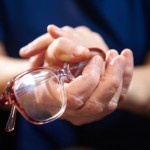 Age related macular degeneration (AMD): AMD is very much an age related eye problem – it mentions it right in the name! In this common eye problem after 50, damage occurs to the macula – which is located near the retina and is necessary for clear, sharp, central vision. AMD can either occur suddenly or not be noticeable for years. Your central vision may become blurry and the area may grow larger, making it more difficult to see straight ahead.
Age related macular degeneration (AMD): AMD is very much an age related eye problem – it mentions it right in the name! In this common eye problem after 50, damage occurs to the macula – which is located near the retina and is necessary for clear, sharp, central vision. AMD can either occur suddenly or not be noticeable for years. Your central vision may become blurry and the area may grow larger, making it more difficult to see straight ahead.
Age related macular degeneration is most commonly found among Caucasians, smokers and those who have a family history of AMD. Making healthy choices is a good way to reduce your risk of developing AMD. Quitting smoking, enjoying a diet of leafy greens and fish, and keeping physically active on a regular basis are all recommended when protecting your vision against AMD.
Must read: Study: Smoking, bad diet and not exercising increase risk of macular degeneration (AMD)
-
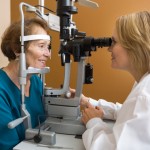 Temporal arteritis: You may have heard temporal arteritis being referred to as giant cell arteritis. It occurs when inflammation affects the blood vessels which supply your eyes, head and optic nerves with blood. Temporal arteritis is very much an age related eye problem and affects women four times more than men. Vision loss runs high with temporal arteritis, but if treated early enough, permanent vision loss can be avoided.
Temporal arteritis: You may have heard temporal arteritis being referred to as giant cell arteritis. It occurs when inflammation affects the blood vessels which supply your eyes, head and optic nerves with blood. Temporal arteritis is very much an age related eye problem and affects women four times more than men. Vision loss runs high with temporal arteritis, but if treated early enough, permanent vision loss can be avoided.
Here are some of the symptoms of temporal arteritis:
- Headache
- Tenderness of the scalp
- Blurred vision
- Fever
- Fatigue
- Depression
- Droopy eyelid
- Double vision
- Sore neck
- Jaw soreness
Again, eating a balanced diet as well as exercise may be helpful when preventing temporal arteritis.
-
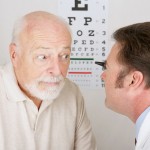 Conjunctivitis: You most commonly know conjunctivitis as pink eye, and it’s the inflammation or infection of the membrane which lines your eye. A pink or red coloring occurs when the blood vessels become infected or inflamed. Most common causes of pink eye are either a bacterial or viral infection entering the eye or an allergic reaction. Pink eye won’t affect your vision – it is more irritating than anything and can be easily treated. Early detection is still necessary though because it is highly contagious and easily spread.
Conjunctivitis: You most commonly know conjunctivitis as pink eye, and it’s the inflammation or infection of the membrane which lines your eye. A pink or red coloring occurs when the blood vessels become infected or inflamed. Most common causes of pink eye are either a bacterial or viral infection entering the eye or an allergic reaction. Pink eye won’t affect your vision – it is more irritating than anything and can be easily treated. Early detection is still necessary though because it is highly contagious and easily spread.
If you have pink eye, ensure you continuously wash your hands and avoid touching the infected eye(s) or other people. Prevention of pink eye also involves the constant cleaning of your hands and not overly touching your eyes if you don’t have to. Changing pillowcases and using new makeup brushes can also help prevent pink eye.
Related reading: Conjunctivitis: Know about Pink eye
-
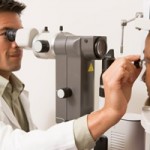 Floaters: Floaters are spots that you see in your line of vision. They can look like specks or spider webs and often move with the movement of your eye. Age-related floaters occur when a jelly-like substance inside the eye becomes more fluid. Fibers then clump together, creating a shadow on the retina which look like spots.
Floaters: Floaters are spots that you see in your line of vision. They can look like specks or spider webs and often move with the movement of your eye. Age-related floaters occur when a jelly-like substance inside the eye becomes more fluid. Fibers then clump together, creating a shadow on the retina which look like spots.
Besides being an age-related eye problem, floaters can also be caused by inflammation at the back of the eye, bleeding in the eye and a torn retina. Other factors which may increase the likelihood of floaters are diabetic retinopathy, eye trauma and eye inflammation.
-
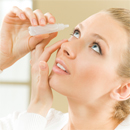 Dry eyes: Our eyes require tears to stay lubricated, but when there are no tears it can lead to dry eyes. There are two main types of dry eyes: Aqueous tear-deficient dry eye and evaporative dry eye. In the first, there is a shortage in the production of tears; in the second, inflammation in the eyelids hinders the ability to produce oils which normally slow down the evaporation of tears. If the tears evaporate too quickly, it can result in dry eyes.
Dry eyes: Our eyes require tears to stay lubricated, but when there are no tears it can lead to dry eyes. There are two main types of dry eyes: Aqueous tear-deficient dry eye and evaporative dry eye. In the first, there is a shortage in the production of tears; in the second, inflammation in the eyelids hinders the ability to produce oils which normally slow down the evaporation of tears. If the tears evaporate too quickly, it can result in dry eyes.
Symptoms of dry eyes include:
- Stinging or burning sensation
- Sandy feeling on the eye surface
- Stringy discharge
- Heavy eyelids
- Inability to cry when stressed
- Decreased tolerance in reading or looking at a computer or TV
Dry eyes can develop as a side effect to medications, be a result of a skin disease around the eyes, immune disorders, allergies, excess of deficiency in vitamins and infrequently blinking. Knowing the cause of your dry eyes will better help you find the right treatment.
Although dry eyes can affect any age group, it’s most commonly found among those 50 years and older. Blinking when looking at screens and using eye drops may help prevent dry eyes from occurring.
Related reading: Spring allergies? Natural solution for dry eyes
Overcoming age related eye problems
Although many of these eye problems are age related, steps can be taken to ensure they do not become severe and you do not lose your vision. Getting regular eye checkups can uncover any eye problems early enough so that treatment can be its most effective.
A lot of aspects change when we get older, but that doesn’t mean you have to lose your vision. Caring for your eyes is equally as important as caring for your body as a whole. So along with checking your blood pressure, monitoring your weight and eating right, keep tracking any changes to your eyes and see your eye doctor on a regular basis.
Related Reading:
Cloudy vision: How to prevent cataracts naturally
Are you having trouble driving – especially at night, reading or seeing the expression on your friend’s face? One common eye condition is cataract, a clouding of the normally clear lens of your eye. It’s as though you’re trying to see through a fogged-up window.
Debunked: 7 eyesight myths you need to stop believing
When it comes to keeping ourselves in good health, we’re given a lot of advice. Depending on where you get the advice from, a lot of it can be false. It can make it hard to tell fact from fiction when it comes to advice – because we start to believe it, the more we hear it. As this advice gets passed down through generations, it becomes more and more “factual” over time.
-
Personal Trainer Explains Ways to Lose Weight
If you’re reading this article, you’re one of the natio
-
What You Can Expect Before the LAP-BAND Procedure
Before the Operation After we jointly ma
-
2 Foods To Avoid If You Want To Lose Weight
The 2 foods to be avoided may come as a surprise to you. You may even
-
Solid Advice For A Successful Weight Loss Plan
What is the most important reason that you would like to lose wei
-
Scientists Uncover Protein's Weight-Loss Secrets
A study of protein-munching rats shows that a low-carb d
-
Unique Lean-Body Exercises for Time-Crunched People: Super-Fast Multi-Work outs to try and do at Home or the Office
Unique Lean-Body Workouts for Time-Crunc
- DON'T MISS
- Diet Program: We Want to See You Succeed
- Food The Proof Is In The Portion
- Hypothyroidism (underactive thyroid) linked to irritable bowel syndrome (IBS), constipation
- 7. Things you Seriously need to look at when Combating obesity...
- Fear- A common Motivator for Self Confidence
- Weight Loss That Lasts--The Importance Of Maintenance
- Achieve Weight Loss, Health And Vitality
- Is Juicing Helpful For Weight Loss?
- Weight Loss Plans For Effective Weight Loss
- Why People Gain Weight Faster Than They Lose




